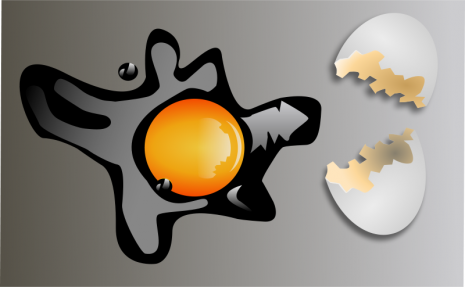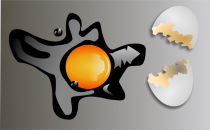
The Egg Bungee Jump - Year 10 CLE

This online resource helps teach the concepts of motion and energy transformations.
The resource is a Science ASSIST Connected Learning Experience (CLE) designed specifically to teach the concepts of motion and energy transformations to Year 10 students.
Description:
In this investigation, motion and energy transformations are investigated in the context of modelling a bungee jump by an egg. There is an emphasis on finding and analysing patterns in data in order to solve a real-world problem.
Learning intentions
Students will be able to:
- understand that one or more different forms (or types) of energy can be present at the same time
- explain that one form of energy can be transformed into other forms and vice versa
- identify that the total amount of energy remains constant (total energy is conserved)
- design a fair test investigation
- make accurate measurements
- construct appropriate representations that allow them to interpret and analyse the data
- identify patterns and relationships in data
- draw conclusions based on evidence.
The SVG-based diagram that this link takes you to is best viewed with a browser other than Internet Explorer.
Australian Curriculum v9 Codes: AC9S8U05 (Year 8), AC9S9U05 (Year 9)
Additional Information
The Connect Learning Experience Resource
A Connected Learning Experience (CLE) is a resource package designed to support the use of inquiry investigations in the classroom.
Each CLE may not encompass all the concepts and skills addressed in the specific content descriptions outlined by the Australian Curriculum: Science for that Year level. The Learning Intentions clearly define the aims and objectives of the CLE.
Year 10 Achievement Standard
This lesson sequence provides opportunities to gather information about students’ achievement of specific components in the standards (which are bolded in the statements below).
By the end of Year 10, students analyse how the periodic table organises elements and use it to make predictions about the properties of elements. They explain how chemical reactions are used to produce particular products and how different factors influence the rate of reactions. They explain the concept of energy conservation and represent energy transfer and transformation within systems. They apply relationships between force, mass and acceleration to predict changes in the motion of objects. Students describe and analyse interactions and cycles within and between Earth’s spheres. They evaluate the evidence for scientific theories that explain the origin of the universe and the diversity of life on Earth. They explain the processes that underpin heredity and evolution. Students analyse how the models and theories they use have developed over time and discuss the factors that prompted their review.
Students develop questions and hypotheses and independently design and improve appropriate methods of investigation, including field work and laboratory experimentation. They explain how they have considered reliability, safety, fairness and ethical actions in their methods and identify where digital technologies can be used to enhance the quality of data. When analysing data, selecting evidence and developing and justifying conclusions, they identify alternative explanations for findings and explain any sources of uncertainty. Students evaluate the validity and reliability of claims made in secondary sources with reference to currently held scientific views, the quality of the methodology and the evidence cited. They construct evidence-based arguments and select appropriate representations and text types to communicate science ideas for specific purposes.
Relevant prior curriculum knowledge
Science / Year 8 / Science Understanding / Physical Sciences
Content description
Energy appears in different forms including movement (kinetic energy), heat and potential energy, and causes change within systems (ACSSU155)
Science / Year 9 / Science Understanding / Physical Sciences
Content description
Energy transfer through different mediums can be explained using wave and particle models (ACSSU182)
- Year 10 > Science Inquiry Skills > Communicating > Communicate scientific ideas and information for a particular purpose,... > ACSIS208
- Year 10 > Science Inquiry Skills > Evaluating > Evaluate conclusions, including identifying sources of uncertainty and possible... > ACSIS205
- Year 10 > Science Inquiry Skills > Planning and conducting > Plan, select and use appropriate investigation types, including field work and... > ACSIS199
- Year 10 > Science Inquiry Skills > Processing and analysing data and information > Analyse patterns and trends in data, including describing relationships between... > ACSIS203
- Year 10 > Science Inquiry Skills > Processing and analysing data and information > Use knowledge of scientific concepts to draw conclusions that are consistent... > ACSIS204
- Year 10 > Science Understanding > Physical Sciences > Energy conservation in a system can be explained by describing energy transfers... > ACSSU190


